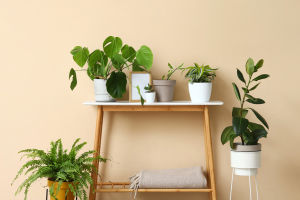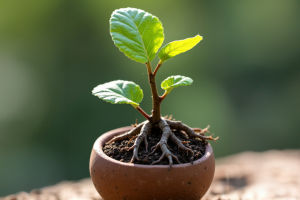Have you ever been drawn to a small plant that looks like a miniature green rose, perfectly folded and peaceful? That's the charm of the Echeveria, often called the "green rose" because of its beautiful rosette shape and soft green to blue gradient leaves.
But beyond its delicate appearance, this succulent carries fascinating survival secrets that make it more than just a pretty plant. Let's explore why Echeveria is so special, especially for anyone who loves low-maintenance greenery with a touch of nature's brilliance.
The Art of Water Conservation in Echeveria
At first glance, Echeveria looks like a tiny green flower blossoming on your windowsill or garden. But these fleshy leaves are actually a masterclass in water conservation. Unlike many plants that rely on constant moisture, Echeveria thrives in dry environments by storing water inside its thick, juicy leaves.
This storage is enhanced by a natural waxy coating on the leaf surface, which minimizes water loss through evaporation. This wax layer acts like a shield, keeping precious moisture locked inside, allowing the plant to survive weeks without watering. This is why Echeveria is such a popular choice for people living in dry or urban areas where humidity can be low.
Why Echeveria Is More Than Just a Pretty Face
Many people pick Echeveria purely for its aesthetic appeal, and it's easy to see why. The plant's symmetrical rosette is visually satisfying, creating a sense of order and calm. The colors range from soft greens to powdery blues, sometimes with hints of pink or purple edges, adding a gentle variety that fits almost any décor.
But beyond looks, Echeveria's growth pattern teaches us a valuable lesson in resilience and efficiency. Each leaf grows continuously, layering outward in a way that maximizes sunlight capture while minimizing water loss. This compact shape also protects the plant's core from harsh sun and wind.
Easy Care Tips for Growing Echeveria Successfully
If you want to bring the charm of Echeveria into your home or garden, here are some tips to keep it thriving:
1. Light: Echeveria loves bright, indirect sunlight. A sunny windowsill or a spot with filtered light is perfect. Too little light and the plant may stretch out, losing its tight rosette shape.
2. Watering: Water sparingly, allowing the soil to dry completely between waterings. Overwatering is the most common cause of problems like root rot.
3. Soil: Use well-draining soil, ideally a cactus or succulent mix. Good drainage is essential to prevent water from sitting around the roots.
4. Temperature: Echeveria prefers moderate temperatures and should be protected from frost. It thrives in typical indoor temperatures.
5. Propagation: You can easily propagate Echeveria by leaf cuttings or offsets, making it fun to grow your collection or share with friends.
Why Echeveria's Survival Strategy Matters to Us
In an age where water conservation is increasingly important, Echeveria offers more than decoration—it's a reminder of nature's clever adaptations. The plant's ability to thrive on limited water is a natural model for sustainability. Experts in xeriscaping—landscaping that reduces or eliminates the need for irrigation—often recommend succulents like Echeveria for eco-friendly gardens.
The waxy leaf coating and water storage features demonstrate a natural efficiency that gardeners and plant lovers can appreciate, especially in areas prone to drought or water restrictions. Growing Echeveria can help raise awareness about using plants that require fewer resources without sacrificing beauty.
Do you have a succulent or a small plant that surprises you with its resilience? Next time you look at an Echeveria, remember it's not just a green rose but a tiny marvel of nature's engineering, perfectly designed to thrive in challenging conditions while adding charm and life to your space.


